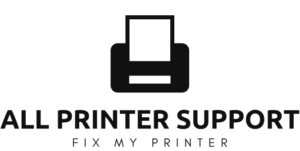Here’s a 400-word section on Setting up Wi-Fi or USB for the Canon PIXMA TS5320:
Setting Up Wi-Fi or USB on Canon PIXMA TS5320
To get your Canon PIXMA TS5320 up and running, you can connect it to your computer using either Wi-Fi or USB. Both methods are easy to set up, depending on your preference and available connection options.
Wi-Fi Setup (Wireless Connection)
Wi-Fi setup allows you to print and scan wirelessly from multiple devices, including computers, smartphones, and tablets. Here’s how to set it up:
1. Power on the printer and make sure the Wi-Fi light is blinking.
2. Press the “Wireless” button on the printer until the wireless icon starts flashing.
3. On the printer’s OLED screen, go to “Wi-Fi Setup” and select your network.
4. Enter your Wi-Fi password using the on-screen keyboard.
5. Once connected, the wireless light will stay solid.
Alternatively, you can use the Canon IJ Network Device Setup Utility or Canon PRINT Inkjet/SELPHY app on your mobile device to complete the connection.
Once connected, install the driver/software on your computer. During installation, choose the Wireless Connection option. The installer will detect the printer on the same network.
USB Setup (Wired Connection)
If you prefer a direct connection or don’t have a wireless network, USB setup is the simplest method:
1. Connect the USB cable (Type-A to Type-B) from the printer to your computer.
2. Power on the printer.
3. Download and run the Canon TS5320 driver setup from Canon’s official website.
4. During installation, choose the USB Connection option.
5. The printer will be automatically detected and installed.
USB setup is reliable and ideal for single-device use, especially when wireless connectivity is unstable or unavailable.
Which Should You Choose?
- Wi-Fi is best for wireless convenience, printing from multiple devices, or using mobile printing features.
- USB is ideal for quick, stable, one-computer setups without needing network access.
Regardless of method, using the official Canon software ensures smooth installation and access to features like scanning, ink level checks, and print settings.
Tip: After setup, print a test page or scan a document to confirm your connection is working properly.
Let me know if you want this adapted into a step-by-step infographic or mobile-specific guide.
